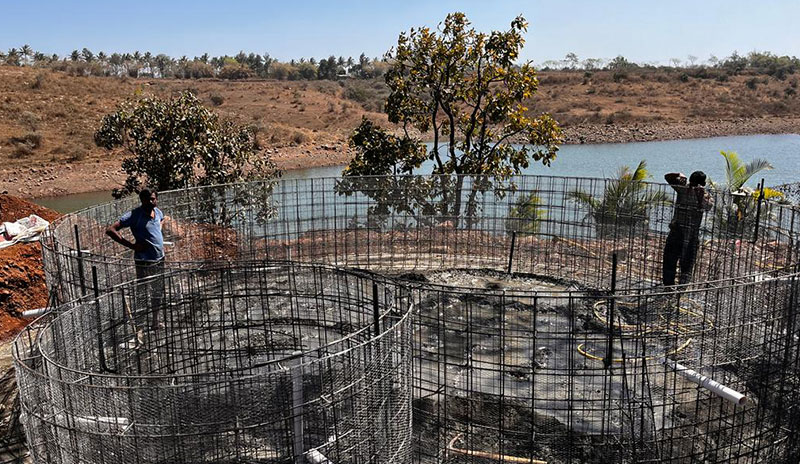Swimming Pool Construction
Constructing a swimming pool is a complex and multi-stage process that involves various steps to ensure a safe and functional final product. Here are the key steps involved in swimming pool construction:
- Design and Planning
- Determine the purpose of the pool (e.g., recreational, lap swimming, decorative).
- Consider the pool's size, shape, depth, and location in your backyard.
- Obtain necessary permits and approvals from local authorities.
- Excavation
- Excavate the area where the pool will be located, taking care to maintain the desired shape and depth.
- Remove any rocks, debris, or tree roots from the excavation site.
- Foundation and Framing
- Create a solid foundation for the pool, typically using concrete.
- Install the pool's steel or polymer frame to support the structure.
- Plumbing and Electrical Work
- Install the pool's plumbing system, including pipes, drains, and skimmers.
- Set up electrical connections for pool lights, pumps, and filtration systems.
- Ensure compliance with local building codes and safety standards.
- Reinforcement and Shell Installation
- Reinforce the pool structure with rebar (steel reinforcement) to add strength.
- Apply the pool shell, which can be made of materials like gunite (concrete and sand mixture), fiberglass, or vinyl liner.
- Shape and finish the pool interior to the desired texture and smoothness.
- Tile and Coping Installation
- Add tiles to the pool's waterline and decorative coping around the edge.
- These elements not only serve an aesthetic purpose but also provide structural integrity.
- Decking and Landscaping
- Install a pool deck or patio around the pool for functional and aesthetic purposes.
- Landscape the area with appropriate plants, shrubs, and features to enhance the pool area's appearance.
- Filtration and Water Treatment
- Install the pool's filtration system, including pumps, filters, and heaters.
- Set up chemical treatment systems to maintain water quality.
- Fill and Start-Up
- Fill the pool with water and carefully balance the water chemistry.
- Test the pool's systems to ensure they are working correctly.
- Safety Features
- Install safety features such as pool fences, covers, or alarms to enhance pool safety, especially if you have children or pets.
- Final Inspection and Certification
- Have the pool inspected by local authorities to ensure it complies with safety and building codes.
- Obtain the necessary certifications and permits to use the pool legally.
- Maintenance and Service
- Regularly maintain the pool by cleaning, monitoring water chemistry, and servicing equipment as needed.
Swimming pool construction can vary in complexity and cost depending on factors like pool type, size, materials, and additional features. It's essential to work with experienced professionals who can guide you through the process and ensure your pool meets your needs and local regulations.

